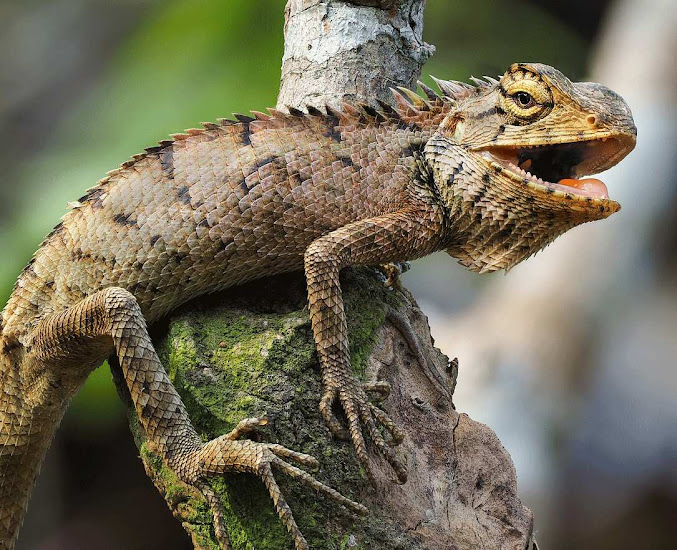African lion
The African lion
African lions have been appreciated over the entire course of time as images of boldness and strength. These notorious creatures have strong bodies — in the feline family, they're second in size just to tigers — and thunders that can be heard from five miles away. A grown-up lion's jacket is yellow-gold, and adolescents have a few light spots that vanish with age. Just male lions regularly brag about manes, the amazing edge of long hair that circles their heads.
Environment
African lions once wandered a large portion of Africa and portions of Asia and Europe. In any case, the species has vanished from 94% of its memorable reach and must be tracked down today in pieces of sub-Saharan Africa. These lions fundamentally adhere to the meadows, scour, or open forests where they can all the more effectively chase their prey, yet they can reside in many natural surroundings besides tropical rainforests and deserts.
Asiatic lions (Panthera leo persica) are a subspecies of the African lion, yet just a single tiny populace gets by in India's Gir Timberland.
Hunting
Lions are the main felines that live in gatherings, which are called pride — however, there is one populace of singular lions. Prides are nuclear families that might contain somewhere in the range of two to 40 lions — including up to three or four guys, twelve or so females, and they're young. A pride's all's lionesses are connected, and female fledglings normally stay with the gathering as they age. Youthful guys ultimately leave and lay out their own prides by assuming control over a gathering headed by another male.
Guys shield the pride's region, denoting the region with pee, thundering menacingly to caution interlopers, and pursuing creatures that infringe on their turf.
Female lions are the pride's essential trackers and pioneers. They frequently cooperate to go after pronghorns, zebras, wildebeest, and other enormous creatures of the open meadows. Large numbers of these creatures are quicker than lions, so collaboration pays off. Female lions likewise raise their fledglings mutually.
After the chase, the collective endeavor frequently ruffians to quarreling about the sharing of the kill, with fledglings at the lower part of the hierarchy. Youthful lions don't assist with hunting until they are about a year old. Lions will chase alone in the event that the open door introduces itself, and they likewise take kills from hyenas or wild canines.
Dangers to endurance
Today, there are just half as numerous African lions as there were quite a while back. The Global Association for the Preservation of Nature (IUCN) gauges that less than 25,000 lions stay in Africa, which is the reason the association orders them as defenseless against elimination.
African lions face different dangers — the vast majority of which can be ascribed to people. Expecting that lions will go after their animals, which can be a huge monetary blow, farmers might kill the animals both in reprisal and as a safeguard measure, some of the time involving pesticides as a toxin. Poachers focus on the species, as well, as their bones and other body parts are important in the unlawful natural life exchange.
The job prize hunting plays are questionable. Blundered hunting in the past has made lions vanish from certain territories, while trackers and those engaged with the business say hunting expenses create cash for lion protection. Public Geographic Traveler Craig Packer, in any case, has said the sum created by hunting is so "disappointing… [that] it's no big surprise that in spite of long stretches of lion hunting being permitted in [some] nations, the lion populace has dove."
Further energizing this contention among lions and people is the deficiency of prey across the species' reach. African lions go after huge herbivores, a populace that is being pursued by an inexorably business bushmeat exchange. The IUCN gauges these populaces have declined by as much as 52% in East Africa and 85 percent in West Africa. With less food accessible in the wild, lions might be bound to go hunting tamed creatures like animals.
Preservation
Assisting people with figuring out how to live with lions is vital to guaranteeing their endurance. Preservation associations are attempting to change mentalities toward lions through pay drives. A portion of these models offers networks monetary prizes when their neighborhood lion populations ascend, while others pay ranchers to supplant their animals that have been killed by lions.
Different preservationists have zeroed in on making safeguarded regions for lions. In Botswana's Selinda region, just a solitary lioness and her whelp lived there when producers Dereck and Beverly Joubert, both Public Geographic Pioneers, transformed the land into a safeguarded hold and visual the travel industry camp. Presently around 100 lions meander the hold.
In Mozambique's Zambezi Delta, where the impacts of an extended nationwide conflict made lion numbers fall, the biggest-ever lion movement project got 24 lions from South Africa in 2018 — they're presently getting comfortable and beginning to have whelps.
African lion Fun facts
· Lions are the main felines that live in gatherings.
· A gathering, or pride, can ultimately depend on 30 lions, contingent upon how much food and water is accessible.
· Female lions are the fundamental trackers. While they're out searching for food, the guys monitor the pride's domain and their young.
· A lion's thunder can be heard as much as eight kilometers away.
· Lion's fragrance marks their region, utilizing their small, to make a line.












